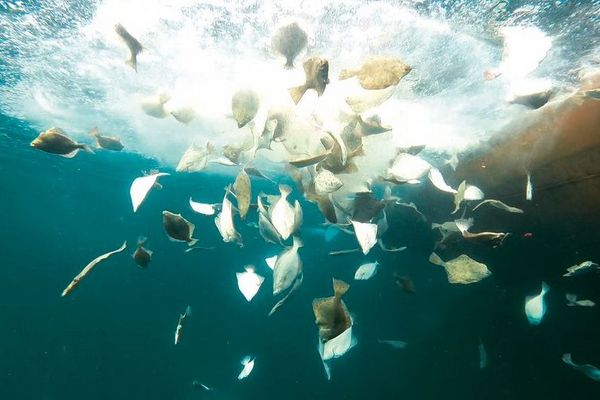Expertise
Discards in marine fisheries
Christopher Zimmermann | 21.06.2022
Until a few years ago, fishers in EU waters were forced to discard fish if they had already exhausted their quota for this species or if the fish were too small. This rule was intended to protect stocks, but often had the opposite effect.
The by-caught fish were usually already dead or died soon after they went overboard. Even worse: the catches discarded in this way were not counted against the permitted catch (catch quota); in many cases they were not even recorded. This made the information on the caught fish generally uncertain – and, consequently, also the scientific stock assessment and catch prediction which form the basis of the fixing the total allowable catch for the next year.
The discard rates vary greatly from region to region and from fishery to fishery: they rarely exceed 2 percent in the North Atlantic pelagic fishery and may reach up to 75 percent in the mixed flatfish fishery in the southern North Sea. Globally, the Food and Agriculture Organization (FAO) estimates that around 7 million tons of fish are discarded, equal to 7 percent of fish landed from wild catches.
EU reform introduces discard ban for fish
Many countries such as Norway, Russia or New Zealand have banned the discarding of caught fish a long time ago. With the reform of the common fisheries policy in 2013, the EU has now taken this step: All catches from stocks regulated by catch limits must be "landed" by 2019 at the latest. Once the quota has been exhausted, fishers will only be allowed to go out to sea if they no longer catch by-catches of this species – which in practice is almost impossible. However, there are so many exceptions to this rule that the landing obligation in many regions can be bypassed almost completely.
Small fish are removed from the ecosystem
In addition, the EU has decided that fish that are smaller than a certain minimum length must now be landed and counted against the quota, but may not be used for human consumption. This also applies to fish that would be suitable for human consumption, but are now in fact used in cat food, biogas plants or – in the worst case – dumped on landfills.
Probably the best solution is to catch only fish that is marketable. The Thünen Institute is working on various projects to make fishing gear more selective in order to achieve this goal.


![[Translate to English:] Logo des Bundesministerium für Ernährung und Landwirtschaft](/media/allgemein/logos/BMEL_Logo.svg)